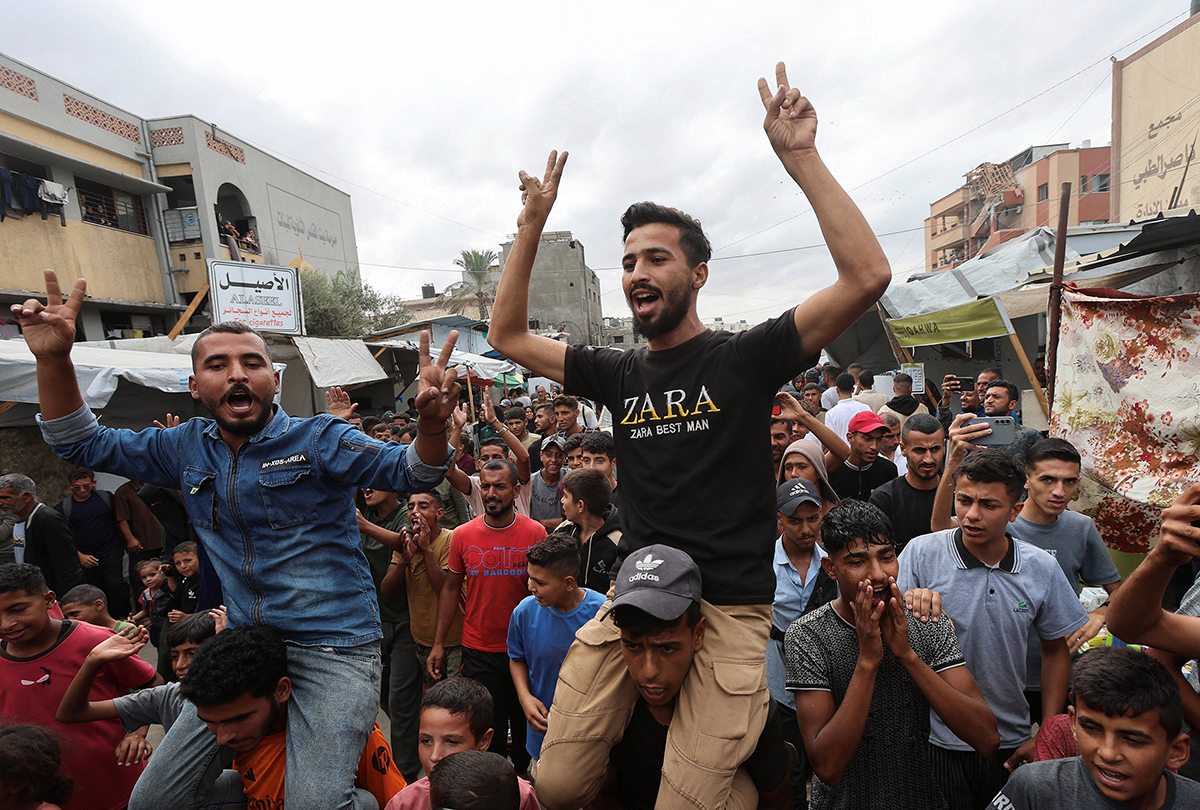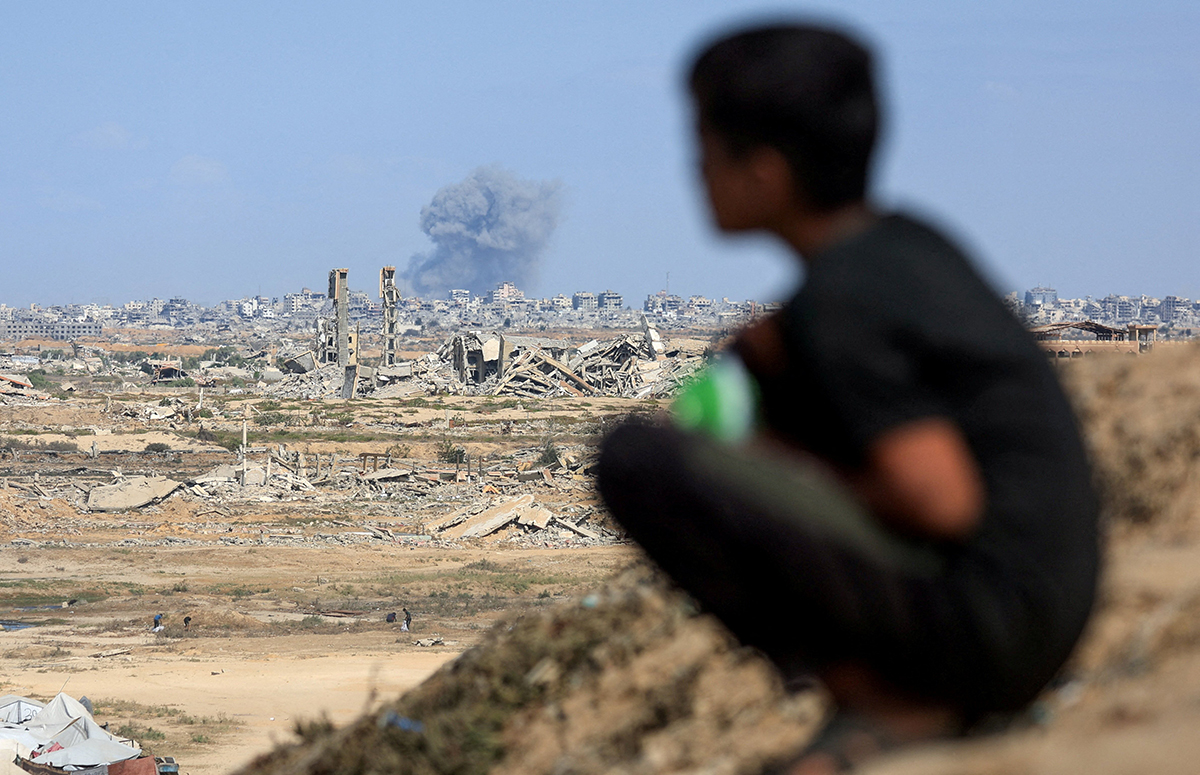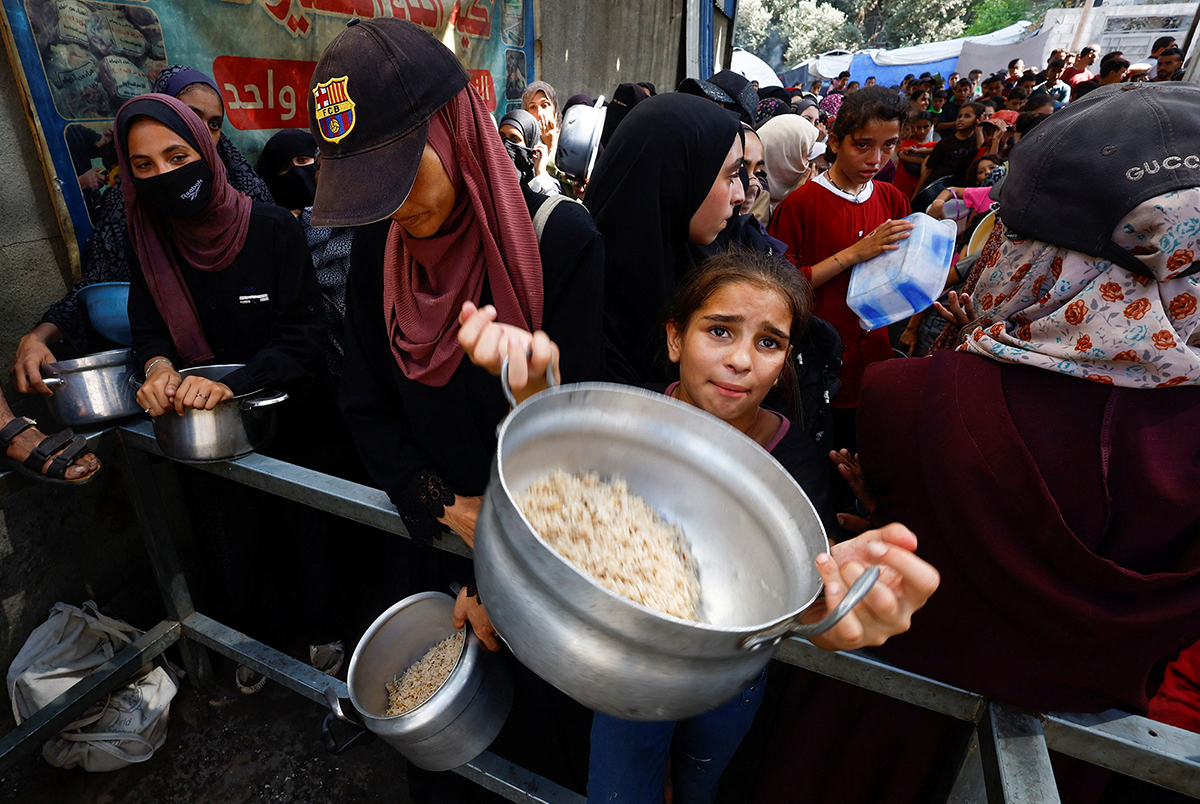At 80th anniversary Mass in Nagasaki, people urged to bring Christ’s love, peace to world

Mass was celebrated on the 80th anniversary of the dropping of the atomic bomb on the city
In his homily at a solemn Peace Memorial Mass Aug. 9, Archbishop Peter Michiaki Nakamura of Nagasaki, Japan, issued a passionate plea to the world.
“We must abandon the fists, weapons and tools of violence we hold in our hands, and stop creating and using nuclear weapons. Let us use our hands to love and embrace others,” he said.
The Mass was offered at Urakami Cathedral in Nagasaki on the exact day that 80 years ago the U.S. dropped an atomic bomb on that city — three days after the Aug. 6, 1945, U.S. atomic bombing of Hiroshima, Japan.
At the Mass, Japanese Catholics were joined by four U.S. prelates — two cardinals and two archbishops — and by Catholic university leaders and students from the United States who were participating in a “Pilgrimage of Peace” to commemorate the 80th anniversary of the bombings and to pray together for peace and for a world without nuclear weapons.
In an English translation of Archbishop Nakamura’s homily, which he delivered in Japanese, he recounted the horror that the nuclear bombing unleashed on that city.
“Eighty years ago, on August 9, 1945, at 11:02 a.m., an atomic bomb exploded approximately 500 meters above Urakami in Nagasaki. The city was reduced to a wasteland. At that time, 74,000 of Nagasaki’s 240,000 residents lost their lives. In Urakami alone, more than half of the 12,000 parishioners, totaling 8,500 people, lost their lives. The Urakami Cathedral, once hailed as ‘the largest cathedral in the East,’ was almost completely destroyed,” he said.
Before the Mass, a new bell donated by U.S. Catholics rang out for the first time in one of the two bell towers of Urakami Cathedral, replacing a bell that had been destroyed in the bombing.
Urakami Cathedral was rebuilt in 1959 with one of the original bells recovered in the rubble of the original cathedral. As a sign of solidarity and faith from U.S. Catholics, the Nagasaki Bell Project raised funds for the casting and installation of the new bell, which rang together with the recovered bell at 11:02 a.m. — the moment when the atomic bomb exploded over the city in 1945.
As the Peace Memorial Mass at Urakami Cathedral began, Archbishop Nakamura blessed with incense two damaged religious artifacts that had been recovered in the rubble of the original cathedral after the bombing — the head of a wooden statue of Mary and a wooden crucifix with the figure of Jesus missing His head and limbs. Those two items were displayed near the altar during the Mass, and the archbishop framed his homily around them.
“The head, hands and feet of Jesus on the cross that you see next to this altar are also missing. Mary’s head is still there, but her face is blackened, and her eyes are gone. It was our hands that started wars and created weapons of mass destruction,” Archbishop Nakamura said.
Noting that people use their hands, feet and minds to hurt others, Nagasaki’s archbishop said, “We must work together with the hands of Jesus. More than that, we must live as the hands of Jesus. … Our hope lies in God’s hands. Let us live as God’s hands.”
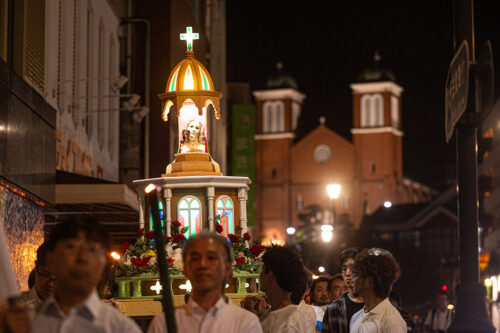
Concluding his homily, Archbishop Nakamura said, “Our peace depends on what we do. … Our peace depends on how we walk. It depends on our feet, our way of thinking, our perspective, and our way of life. In other words, our peace depends on living like Christ. This means thinking, speaking, acting and loving like Christ.
“For that reason, let us once again begin our true journey by gazing upon Jesus and Mary who survived the bombing, and considering how they became like this out of love for us.”
During the Mass, Archbishop Francisco Escalante Molina, the Vatican’s apostolic nuncio to Japan, noted that people had journeyed together to commemorate the anniversaries of the atomic bombings in Hiroshima and Nagasaki, “to offer our prayers for those how suffered and those who died, and for lasting peace among all people.”
He noted that week included interreligious gatherings and meetings with civil authorities, religious leaders, diplomatic representatives and Hibakusha, survivors of the atomic bombings, to pray for peace, “a prayer that must never end.”
Archbishop Molina read a message from Pope Leo XIV, who offered respect to the Hibakusha. Their “stories of loss and suffering are a timely summons to all of us to build a safer world and foster a climate of peace,” he said.
Hiroshima and Nagasaki “remain living reminders of the profound horrors wrought by nuclear weapons. Their streets, schools and homes still bear scars — both visible and spiritual — from that fateful August of 1945,” the pope said.
Quoting words often said by Pope Francis, he said, “War is always a defeat for humanity.”
Decrying nuclear weapons, Pope Leo said, “True peace demands the courageous laying down of weapons — especially those with the power to cause an indescribable catastrophe. Nuclear arms offend our shared humanity and also betray the dignity of creation, whose harmony we are called to safeguard.”
After the Mass, the pilgrims from the United States and Japanese Catholics marched together from Urakami Cathedral to Nagasaki Peace Park in a torchlight procession symbolizing the light of faith and the hope for a nuclear-free future that united them.
